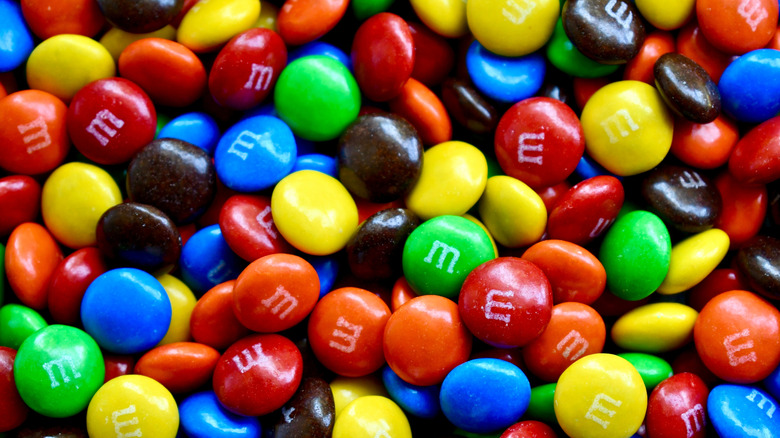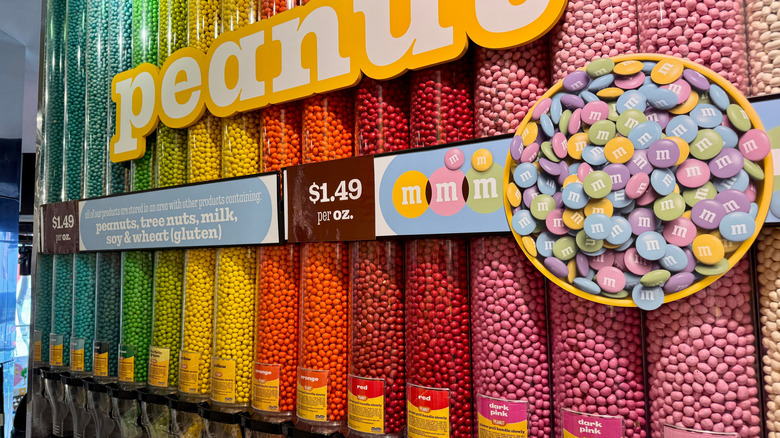What Is The Rarest Color Of M&M?
Ever since its founding in the 1940s, M&M's have gone on to be one of the most iconic candies in history. It's one of the greatest classic movie theater snacks (which we have ranked), and makes for a delicious add-in for a batch of over the top brownies. M&M's are small, sweet, and ready to be snacked on, so it's easy to see why they're so loved.
The candy's popularity has never been in question, but one thing is: the color distribution. M&M's may seem like they are separated by color in equal amounts, but there's actually more of certain colors than others. According to SAS, the world's largest corporate consumer of M&M's, the rarest color of M&M is brown (or it was, at least, back in 2017).
The reason why there's different amounts of each color hasn't been made precisely clear. There hasn't been any more recent studies on M&M's color distribution, so SAS' data is the most updated set of information currently available. Granted, in the end color doesn't affect much; the M&M's are stamped with a tiny "m" and filled with the same chocolate, regardless of the color. Still, it's fun to contemplate the likelihood of opening a pack to your favorite color of M&M.
The color distribution of M&M's
At one point, Mars, Inc., the parent company of M&M's, actually had color distribution information available on its company site. However, for unknown reasons, this practice has been discontinued; the last time this information was available on Mars' site was back in 2008. At the time, brown was the rarest M&M and, given that there have been no statistical updates, there's a good chance that is still true to this day.
According to SAS, the precise percentage of brown M&M's recorded by Mars was 13% in 2008. Ironically, this is the polar opposite of M&M's color distribution during the 1990s, during which brown was actually the most common color with a 30% distribution. In fact, brown switched almost exactly with blue, which previously only had 10% distribution but is now the most common color at 24%. Why the distribution changed between the 1990s and the mid-2000s is not known.
Although very little official data has come from Mars since 2008, a 2010 episode of "Unwrapped" on Food Network has given a little more insight into the candy's color distribution (via YouTube). According to the show, a bag of M&M's is divided into 25% red, 25% orange, 25% blue, and 12.5% combination of brown, yellow, and green. Regardless of which data set you look at, it seems that brown was certainly the rarest M&M color.

